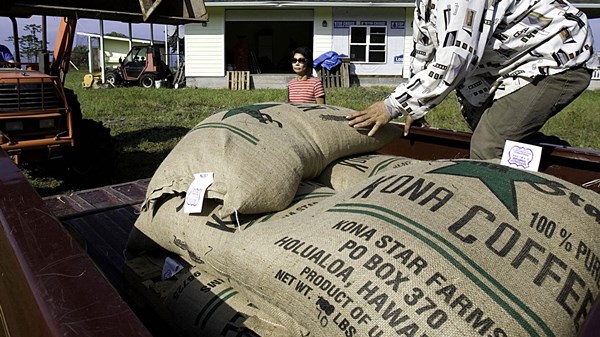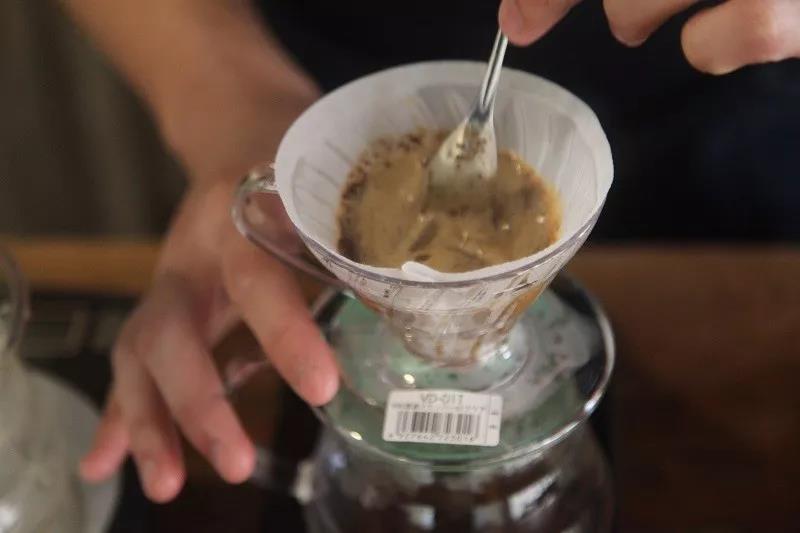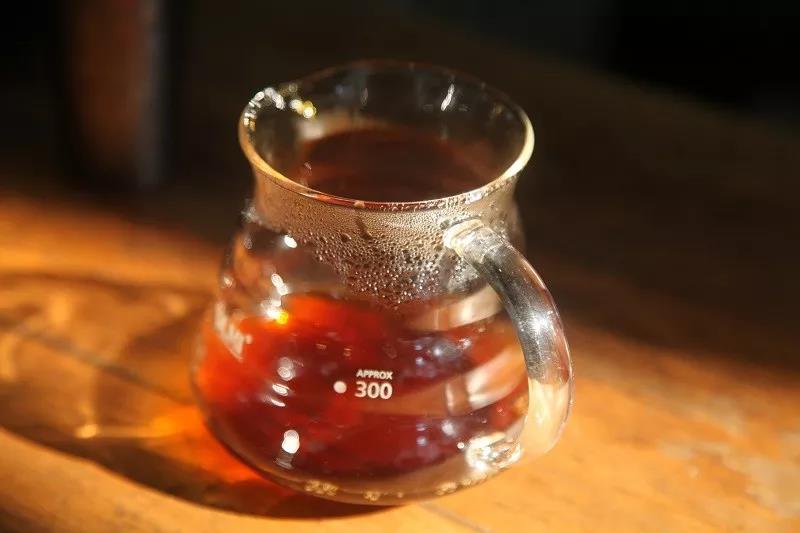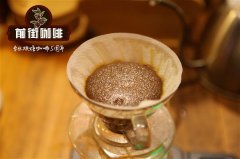How to identify the authenticity of Hawaiian kona coffee why Hawaiian Kona coffee is so expensive

Professional coffee knowledge exchange More coffee bean information Please pay attention to coffee workshop (Weixin Official Accounts cafe_style)
Hawaiian Coffee Authentic Labeling
Questions and answers about Hawaiian coffee labeling laws, let's see how they are accountable to producers and consumers.
Hawaii has already had imported beans mixed with native beans. After the event, their reflexive powers contribute to and pass through the "true labeling" with strong self-control.
Q. Why is the "true labeling" important to the Hawaiian coffee industry?
A. Most coffee beans roasted and sold in Hawaii carry the Hawaiian logo, but are only 10% blended (only 10% Hawaiian coffee beans mixed with 90% imported coffee beans). The general public cannot understand this. Cognitively, they are indeed Hawaiian coffee beans (although nine out of ten are not). The label allows roasters to clearly label the blend (stating 30% or 50% Hawaiian beans, as opposed to only 10%).
Q: What are the benefits to Hawaii's coffee industry?
A: The Hawaiian Coffee Association believes that this new labeling requirement has potential benefits for Hawaiian coffee production, increasing the percentage of Hawaiian coffee products.
Q. What are the benefits to consumers?
A. It is clearly in the interest of consumers, firstly, to make them more aware of what they are buying and secondly, to provide them with the ability to distinguish between blended beans and 100% coffee beans. The requirements of the Truth-Label Act for product labeling must enable consumers to clearly distinguish between Hawaiian beans and foreign beans, and 100% Hawaiian beans. HCA (Hawaiian Coffee Association) believes that helping provide consumers with high quality blended beans will increase the percentage of Hawaiian coffee beans.

Q. Why is this new law necessary? What is the role of HCA?
A. In response to complaints from the Japanese coffee industry about adulteration of Hawaiian coffee beans, the Hawaiian Coffee Association (HCA) formed a strategic development committee to draft a labeling law for the blend. The committee consists of state farmers, processors, bakers, and retailers. The University of Hawaii College of Agriculture Assistance Committee met repeatedly for several months and finally unanimously approved a new direction to recommend to the Hawaii Legislative Council.
After drafting the law, the commission spent a year making representations to the state coffee industry.
HCA made a formal presentation at its 2001 General Assembly and held several meetings with industry groups such as The Kona Coffee Council, Kona Farmer Alliance, Hawaii Farm Bureau, Kona Pacific Farmers Cooperative, etc. These organizations can propose possible implications and then amend the legal provisions.
Q: Who is against it?
A: This bill was introduced in the Farm Management Bureau Package Bill during the Hawaii Legislature's opening session in 2002. The Farm Operations Bureau issues HCA representations and follows legislative procedures. There were no objections from the eight committees, and the bill (SB2169) was sent to the governor for signature in April 2002.
Q. Why not just change the law to require a higher percentage of Hawaiian coffee beans in the blend?
A. Frankly, HCA started out doing this, but found that our minimum number of member pairs was 10%, 33% or 50%. The opinions are not unanimous. We went on to find common ground, which is agreement and good for people, and what we found was authentic labeling--clearly telling consumers what they were buying. True identity is a rarely controversial concept.

Q. Does the new law require at least how many Hawaiian beans are in Hawaiian blends?
A. Yes, but only in the case of mixed beans using Kona Coffee. As with the current law, it requires the use of at least 10% Kona coffee beans. There are no rules for coffee beans from other parts of Hawaii.
Q. How does the new law affect current coffee producers in Hawaii?
A. If you are producing a coffee label, there must be some changes in your product label.
For people who mix foreign beans with Hawaiian coffee beans, the actual ratio of Hawaiian coffee beans must be written on the front label in the same font size as the Hawaiian origin. For example: now labeled "Kona Blend," it must be changed to "__% Kona Blend." The requirement to state "Contains not less than 10% Kona Coffee" has been eliminated by the new law.
For producers of 100% Hawaiian products, the word "100%" must appear on the front label in the same font size as the Hawaiian origin.
Q. When the new law is passed, coffee producers will have to discard existing labels.
A. No, the new law gives producers a one-year grace period to continue using their current labels.
Q. How can the public find information about this new law?
A. The Hawaii Coffee Association will post the new law on its website at www.hawaiiccoffeeassoc.org, and anyone who creates a label should notify Diane Yamamoto of the Department of Agriculture's Quality Assurance Bureau at (808) 973-9563.
Q. Why do you mention Hawaiian coffee more than Kona coffee?
A. HCA mentions all coffee produced in Hawaii, not just Kona coffee, so our conversation tends to use Hawaiian coffee. When we refer to Hawaiian coffee, we mean the recognized Hawaiian origins, including Kona, Kauai, Molokai, Oahu and Maui, and call this origin Hawaii, which contains 100% Hawaiian coffee beans, whether it is a single island or a combination of different islands.
Q. What is HCA?
A. The Hawaiian Coffee Association represents every segment of the Hawaiian coffee industry. Our leaders and members include coffee growers, roasters, wholesalers and retailers, coffee researchers and representatives of other coffee associations. The Hawaii Coffee Association aims to promote consumption of coffee grown in Hawaii by educating and informing sellers and consumers.
Our website: www.hawaiicoffeeassoc.org
HCA is an umbrella organization for businesses accredited by the Hawaii Department of Agriculture. We are the leader of several representative organizations: the Kona Coffee Council, The Kona Farmers Alliance, and the Hawaii Coffee Growers Association. We are involved in coffee research with Hawaii Agricultural Research Center and University of Hawaii College of Tropical Agriculture and Human Resources. However, over the past two years, we have focused on integrating marketing and education and found that Truth In Labeling is an effective way to meet these issues.
related issues
Q. Why is coffee so expensive?
A. Over the past 150 years, the coffee industry in the Kona region has gradually developed from small farmers averaging 3-5 acres. The products of these farms are mainly picked by hand. Compared to other coffee countries, the price of its products must be much higher. However, the region's famous "coffee belt"(1000 to 2500 feet above sea level) has a perfect coffee growing environment and has been producing the best quality coffee in the world for 150 years.
Due to limited coffee production per unit area, market awareness has developed over many years and people have been willing to buy cona coffee at higher prices.
Q. How to distinguish coffee from different islands and from Cona Island?
A. We live in Hawaii and appreciate the character and aroma of inter-island coffee. We have prepared a new Hawaiian Coffee Association brochure describing the quality of coffee on each island. At the same time, experienced experts are available to serve as coffee commentators in various regions.
Front Street Coffee suggested hand brewing parameters:
1. Filter cup: V60
2. Water temperature: 92 degrees
3. Abrasion: Small Fuji Abrasion 3.5
4. Degree of roasting: medium roasting
5. Steaming time: 30 seconds

Front Street Coffee suggested technique: slow and stable continuous water injection: fine water flow around the circle, gently inject water to make it evenly extracted,
Very slowly, can also be appropriately stirred with a stirring rod, usually in the stewing stage, a cross stirring, so that water fully contact coffee powder, increase the release of aromatic substances.

Flavor: Malt, mulberry, lingering caramel sweetness
Qianjie Coffee: Guangzhou's baking shop, small store but a variety of beans, can find a variety of famous beans, but also provide online store services. https://shop104210103.taobao.com
Important Notice :
前街咖啡 FrontStreet Coffee has moved to new addredd:
FrontStreet Coffee Address: 315,Donghua East Road,GuangZhou
Tel:020 38364473
- Prev

Historical Information on the cultivation of Ka' Uka Fog Coffee in the Coffee producing area of Ka' Kona, Hawaii
Professional coffee knowledge exchange more coffee bean information please follow the coffee workshop (Wechat official account cafe_style) Hawaii Cafu Hawaii Kau over the years the Hawaiian Big Island Cafu has received a fairly high international rating, and the annual coffee competition (Coffee of the Year) of the American SCAA Coffee Show has been selected into the Top 10 ranking several times, and Xia
- Next

How do I drink Hawaiian Kona coffee? Hawaiian Kona Coffee Brewing course sharing
Professional coffee knowledge exchange more coffee bean information Please pay attention to the coffee workshop (Wechat official account cafe_style) unique growth and climatic environment make Hawaiian Kona coffee perfect taste: Hawaiian beach, monsoon and volcanic taste. Kona coffee beans from Hawaii are the most beautiful coffee beans in the world. They are extremely full and shiny. Kona Coffee
Related
- Does Rose Summer choose Blue, Green or Red? Detailed explanation of Rose Summer Coffee plots and Classification in Panamanian Jade Manor
- What is the difference between the origin, producing area, processing plant, cooperative and manor of coffee beans?
- How fine does the espresso powder fit? how to grind the espresso?
- Sca coffee roasting degree color card coffee roasting degree 8 roasting color values what do you mean?
- The practice of lattes: how to make lattes at home
- Introduction to Indonesian Fine Coffee beans-- Java Coffee producing area of Indonesian Arabica Coffee
- How much will the flavor of light and medium roasted rose summer be expressed? What baking level is rose summer suitable for?
- Introduction to the characteristics of washing, sun-drying or wet-planing coffee commonly used in Mantenin, Indonesia
- Price characteristics of Arabica Coffee Bean Starbucks introduction to Manning Coffee Bean Taste producing area Variety Manor
- What is the authentic Yega flavor? What are the flavor characteristics of the really excellent Yejasuffi coffee beans?

